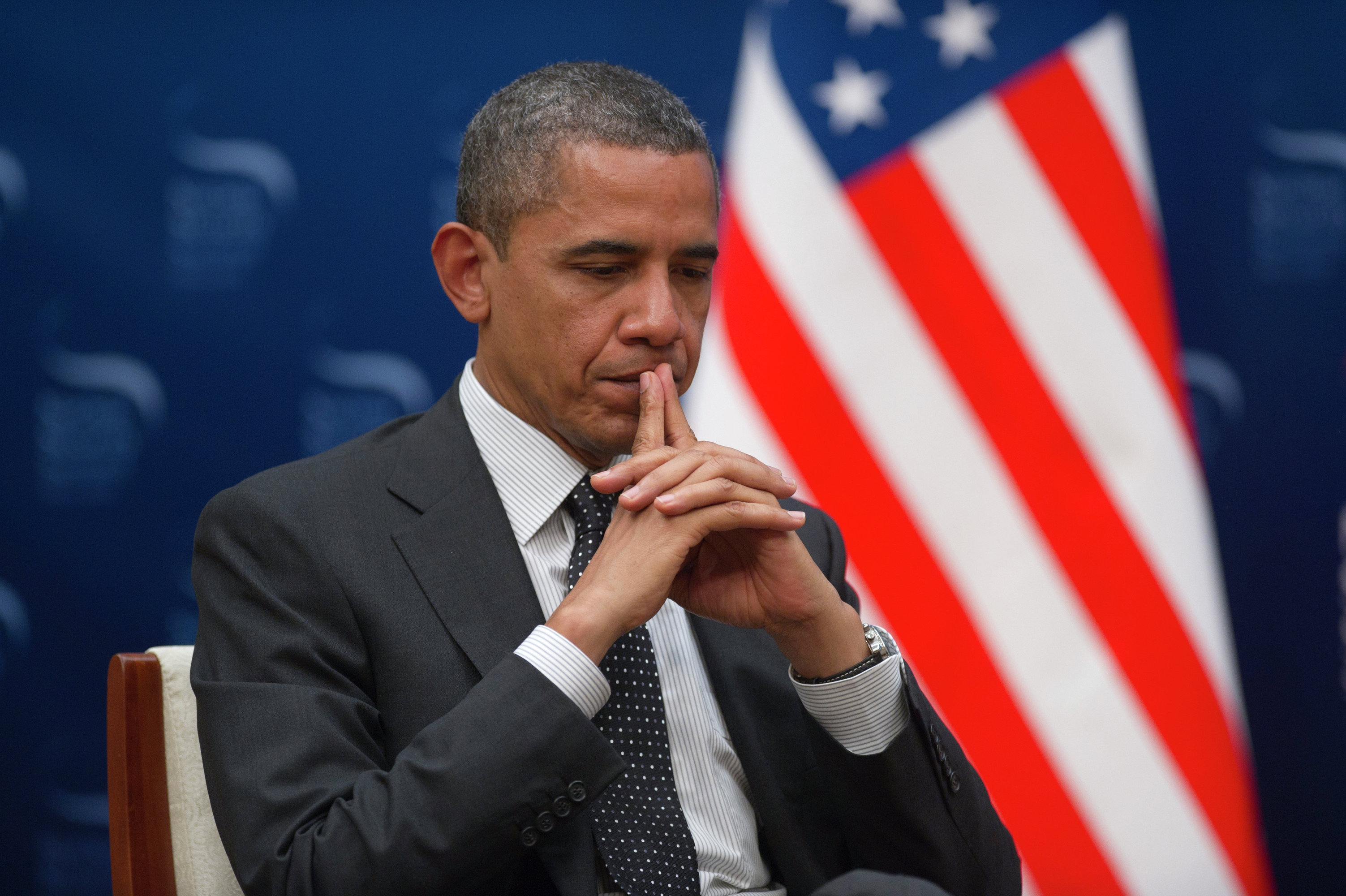MOSCOW, January 17 - RAPSI, Ingrid Burke. US President Barrack Obama presented a comprehensive plan Wednesday aimed at curbing gun violence in the aftermath of the second-deadliest school shooting in US history – a massacre which claimed the lives of 20 small children and six adults at Sandy Hook Elementary School in Newtown, Connecticut last month.
In introducing the plan, Obama announced that he would sign 23 executive actions aimed at curbing gun violence, but called on Congress to share the burden by rapidly adopting a series of crucial initiatives relating to background checks, assault weapons, high-capacity magazines, and penalties for black market gun salesmen.
Obama vowed in a speech preceding the unveiling of his plan, “I’m going to do my part. As soon as I'm finished speaking here, I will sit at that desk and I will sign a directive giving law enforcement, schools, mental health professionals and the public health community some of the tools they need to help reduce gun violence… These are a few of the 23 executive actions that I’m announcing today.”
The plan, entitled: “Now is the Time: The President’s plan to protect our children and our communities by reducing gun violence,” begins with a brief acknowledgment of the elephant in the room – the Second Amendment, which guarantees the right of US citizens to bear arms: “Most gun owners are responsible and law-abiding, and they use their guns safely. The President strongly believes that the Second Amendment guarantees an individual right to bear arms.”
The qualifier immediately following this point, however, may prove fertile grounds for criticism among gun rights camps: “But to better protect our children and our communities from tragic mass shootings… there are four common-sense steps we can take right now.”
In Obama’s view, four key issues must be dealt with immediately: the closing of the loopholes within the current system of background checks that enable guns to fall into “dangerous hands,” a ban on military-style assault weapons and high-capacity magazines, an increase in school safety, and an improvement in the availability of mental health services.
Background checks
With regard to closing the background check loopholes, Obama proposes requiring background checks for all gun sales, and strengthening the preexisting background check system.
Under the present system, federally licensed gun salesmen are required to perform background checks prior to making a sale, but 40% of gun sales are carried out by private salesmen who are exempt from these requirements.
To this point, Obama urged Congress to adopt legislation requiring background checks for all gun sales.
In the meantime, Obama plans to use executive action to call on private sellers to sell their guns through licensed dealers, who in turn can run background checks on buyers.
Obama will further launch four executive actions aimed at strengthening the present system of background checks, including: [addressing] unnecessary legal barriers that prevent states from reporting information about those prohibited from having guns..., [improving] incentives for states to share information with the background check system…, [holding] federal agencies accountable for sharing reliable information with the background check system…, [and making] sure dangerous people are prohibited from having guns.”
In order to prevent the transfer of guns to “dangerous people,” the president plans to work with the US Attorney General to review the current classes of people prohibited from owning guns, and to make legislative and executive recommendations aimed at ensuring that the list is as comprehensive as necessary.
Military-style assault weapons and high-capacity magazines
Obama called on Congress to act to keep military-style assault weapons and high-capacity magazines off the streets, citing the fact that the shooters in both Newtown and Aurora used semi-automatic weapons of varieties that were prohibited under a federal assault weapons ban that was lifted in 2004.
In addition to urging a Congressional reinstatement of the ban, the president implores US lawmakers to “strengthen” it, noting that gun manufacturers succeeded in skirting the earlier ban by way of cosmetic requirements.
In asking Congress to reinstate the earlier ban on magazines capable of containing more than 10 rounds, the plan depicts high-capacity magazines as accessories to mass devastation: “These magazines enable any semiautomatic weapon to be used as an instrument of mass violence, yet they are once again legal and now come standard with many handguns and rifles.”
The plan further seeks a Congressional ban on armor-piercing bullets, except in the hands of military and law-enforcement officials.
The plan further outlines various other Congressional initiatives sought, and executive actions set to be taken.
Congress is urged, among other things, to impose steeper fines for gun trafficking, to promote a sufficient police presence manning the streets of America’s towns and cities, to “finally” confirm a new director of the Bureau of Alcohol, Tobacco, Firearms, and Explosives, and to provide active shooter training to police, first responders, and school officials.
The Obama administration has vowed, among other things, to enhance gun tracing data and to help prevent law enforcement officials from mistakenly returning firearms that were confiscated during the course of an investigation to individuals that are prohibited from possessing them.
The plan goes on to urge Congress to lift its freeze on gun violence research with specific emphases on the need for more research into the link between gun violence and video games and media violence, and on the need for more information on how firearms are used in cases of violent death.
The plan is rounded out with intiatives aimed at improving the safety of schools and improving the availability of mental health services. Specifically, the plan provides for an increase in the number of resource officers and counselors in schools, as well as more comprehensive emergency plans, and called for the availability of mental health care to students and young adults, as well as through health insurance plans.
Second Amendment guarantees
The right of US citizens to bear arms is enshrined in the second amendment to the US Constitution, which reads: “A well regulated Militia, being necessary to the security of a free State, the right of the people to keep and bear Arms, shall not be infringed.”
In the past, the federal government has fiercely defended gun ownership rights. The UN’s endeavor last July to negotiate a comprehensive arms trade treaty ended in a stalemate widely attributed to the US’ refusal to accept overly broad terms. In a widely publicized move, 51 US senators pledged to vote against ratification of the treaty if it failed to protect the constitutional right of citizens to bear arms. As US ratification of an international treaty requires the approval of two-thirds of the senate, these numbers were sufficient to ensure against US ratification of the bill.
Likewise, the US Supreme Court has issued two decisions in recent years holding that state and local laws, as well as the laws of federal enclaves, must respect second amendment rights.
While federal law protects the second amendment rights of citizens and regulates certain types of fire arms, states are generally entitled to regulate the use, possession, and sale of guns within their own borders.
Critics of increased gun regulation
Gun-rights advocates have remained on the defense in recent days as the Obama administration finalized its plan.
Prior to presenting the plan, US Vice President Joe Biden met with a wide array of stakeholder in the gun-violence debate. Included among these stakeholders was the National Rifle Association – America’s foremost gun lobby, boasting a membership base of approximately four million.
The NRA walked away from its meeting with Biden last Thursday disgruntled over the beating that the Second Amendment stood to take, in its view, at the hands of the Obama administration. An official statement released shortly afterward stated: “We were disappointed with how little this meeting had to do with keeping our children safe and how much it had to do with an agenda to attack the Second Amendment.”
As stated in a press release issued late last month, the NRA firmly holds that“[t]he only way to stop a monster from killing our kids is to be personally involved and invested in a plan of absolute protection.” The oft-quoted declaration: “The only thing that stops a bad guy with a gun is a good guy with a gun,” has been greeted by advocates on opposing sides of the gun-rights spectrum with equal, albeit irreconcilable fervor.
The NRA walked away from its meeting with Biden last Thursday beyond disgruntled, vowing to take its fight to Congress: “It is unfortunate that [the Obama] Administration continues to insist on pushing failed solutions to our nation's most pressing problems. We will not allow law-abiding gun owners to be blamed for the acts of criminals and madmen. Instead, we will now take our commitment and meaningful contributions to members of congress of both parties who are interested in having an honest conversation about what works - and what does not.”
Shortly after the plan’s official release Wednesday, the NRA fired back an official statement asserting: “Attacking firearms and ignoring children is not a solution to the crisis we face as a nation. Only honest, law-abiding gun owners will be affected and our children will remain vulnerable to the inevitability of more tragedy.”
The NRA then vowed to work with Congress “to find real solutions to protecting America’s most valuable asset – our children.”



